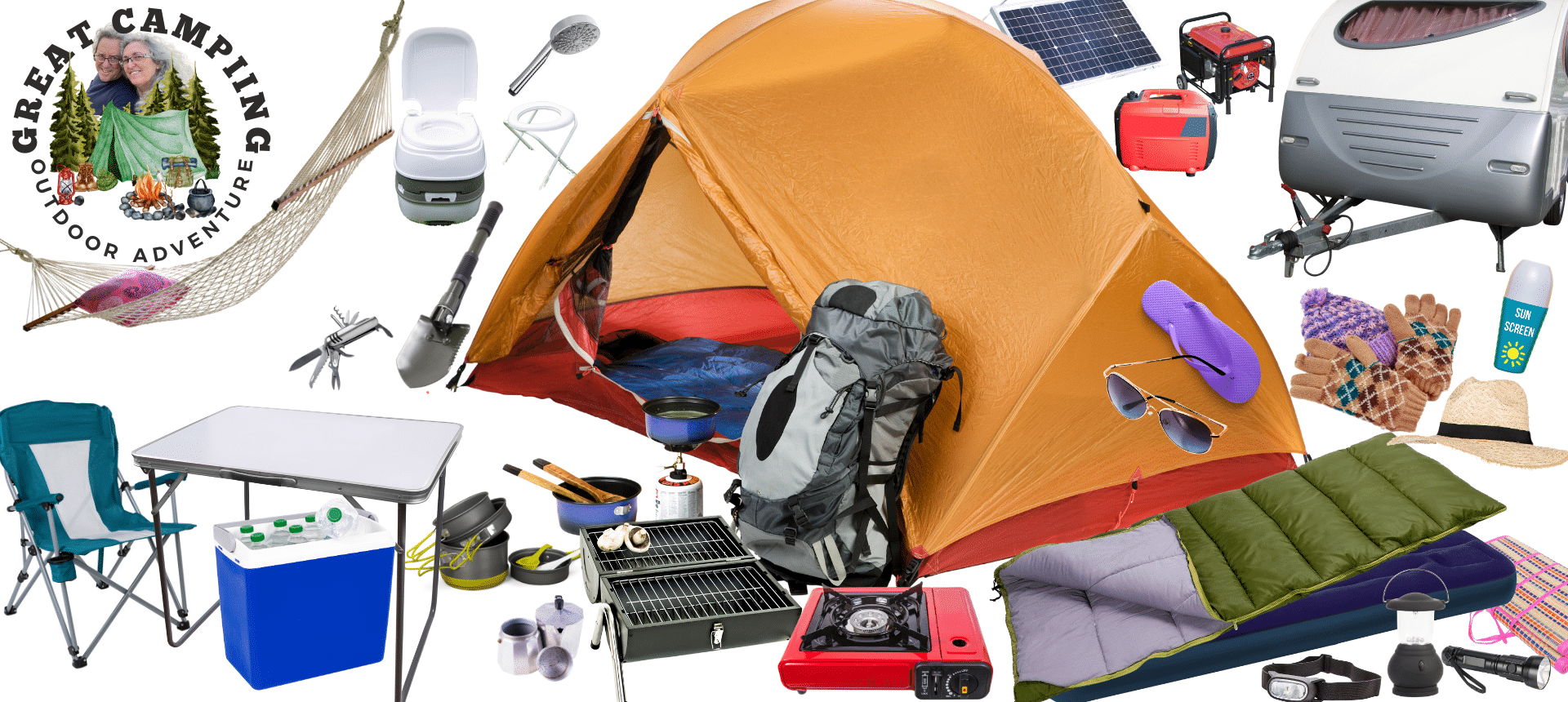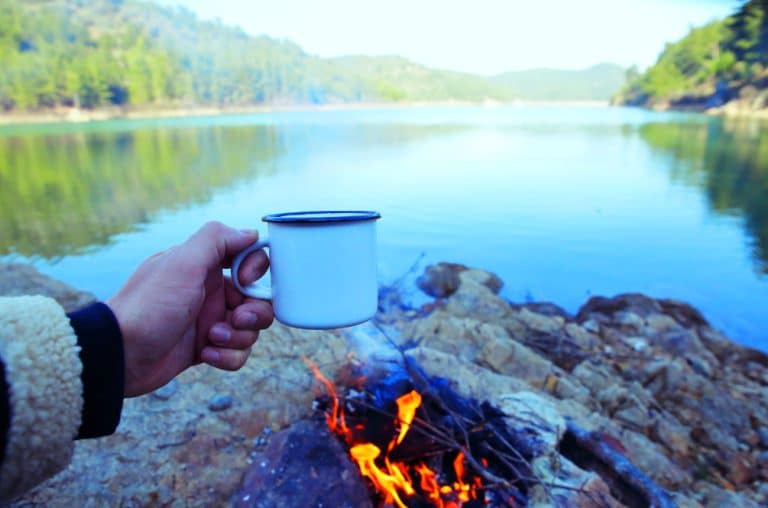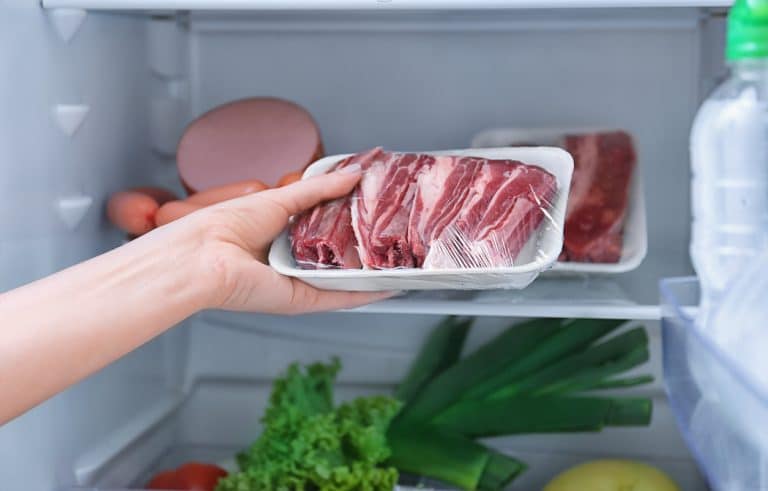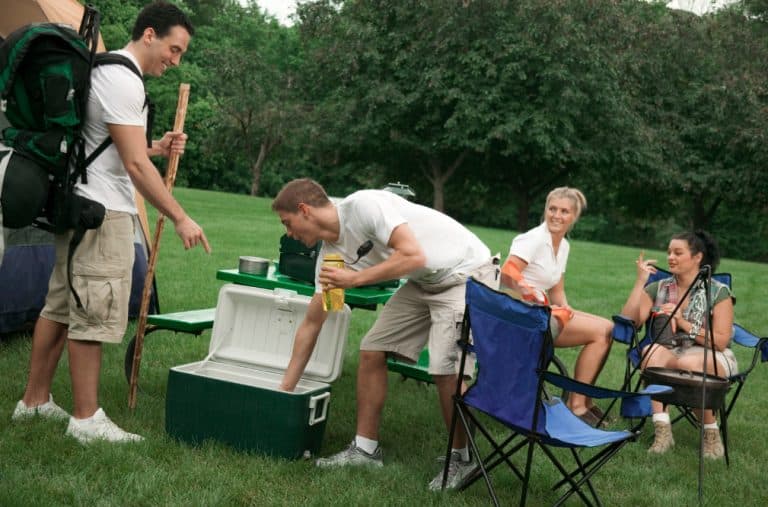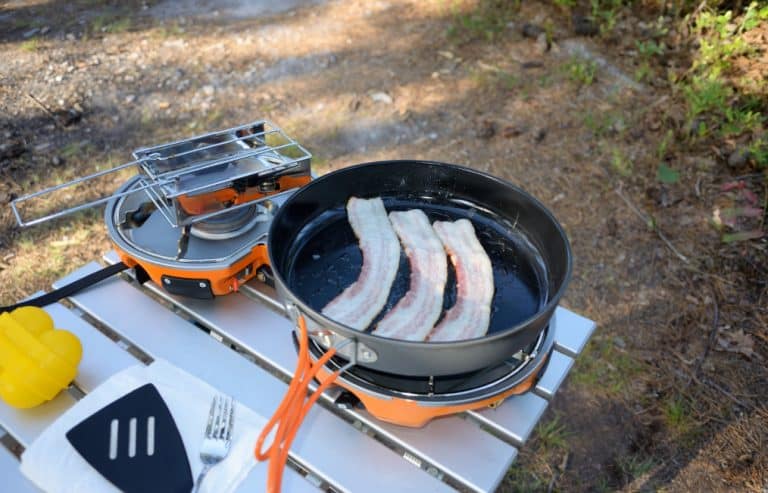Types of Camping Coffee Makers
There is nothing quite like waking up to the aroma of freshly brewed coffee while camping in the great outdoors. A camping coffee maker can make your mornings more enjoyable, ensuring that you have a hot and delicious cup of coffee to kickstart your day. In this comprehensive guide, we will explore the different types of camping coffee makers, their features, and tips to choose the perfect one for your next adventure.
Over an open flame
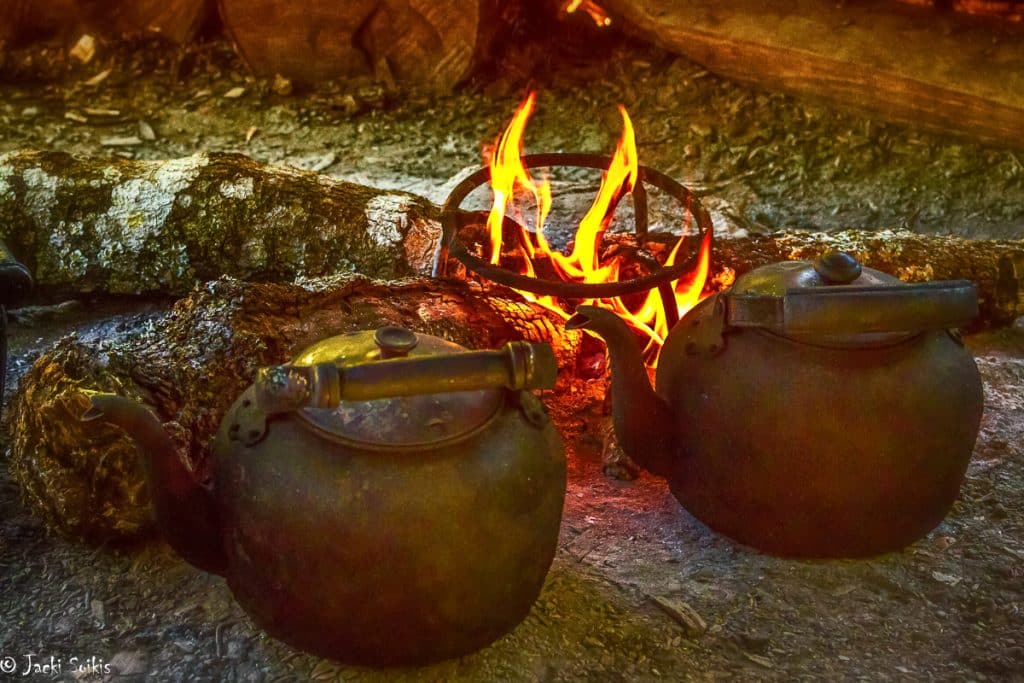
Making coffee over an open flame can be a great way to enjoy a cup of joe while camping. Whether you’re using a campfire, BBQ grill, or camping stove, you can use the heat of an open flame to make a delicious and hot cup of coffee. This method of preparing coffee is simple, but there are some things you should keep in mind to ensure that you get the best possible cup. Be sure to keep an eye on your coffee while it’s brewing—you don’t want it to boil or get too hot, as this can make for a bitter cup.
Camping Stoves
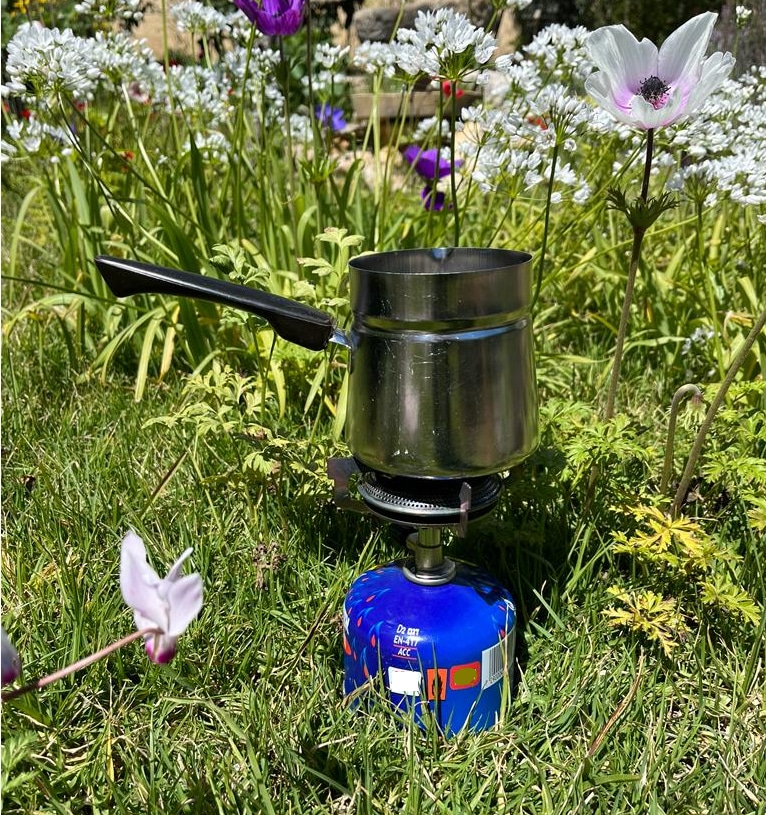
Camping stoves are an essential item for any camping trip, providing a reliable heat source to cook food and boil water. Whether you’re car camping or backpacking, there is a wide variety of camping stoves available that are designed to meet your specific needs. When choosing a camping stove, consider how much weight you can carry and the type of fuel you’ll use.
French Press

A French press is a simple, portable, and elegant solution for making coffee while camping. It works by steeping coffee grounds in hot water and then pressing them through a mesh filter to separate the liquid from the grounds. This method results in a rich, full-bodied cup of coffee. French presses are available in various materials, including stainless steel, glass, and plastic.
Pour Over

The pour-over method is another popular option for making coffee while camping. It involves pouring hot water over coffee grounds placed in a cone-shaped filter, allowing the coffee to drip into a cup or carafe. This method offers greater control over brewing variables like water temperature and extraction time, resulting in a cleaner and brighter cup of coffee. Pour-over coffee makers are lightweight and easy to pack, making them ideal for backpacking trips.
AeroPress
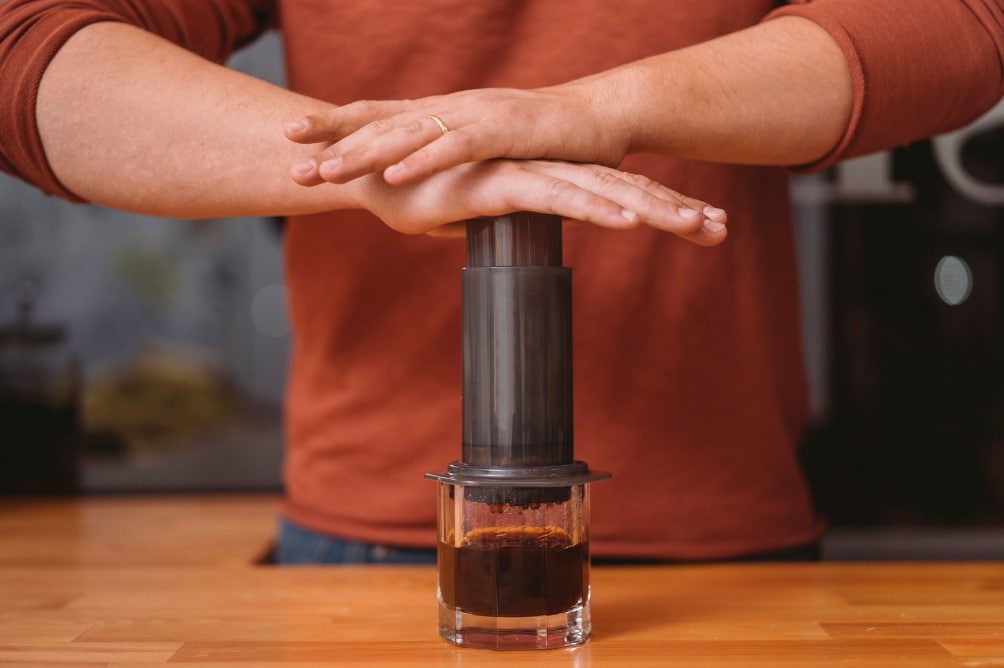
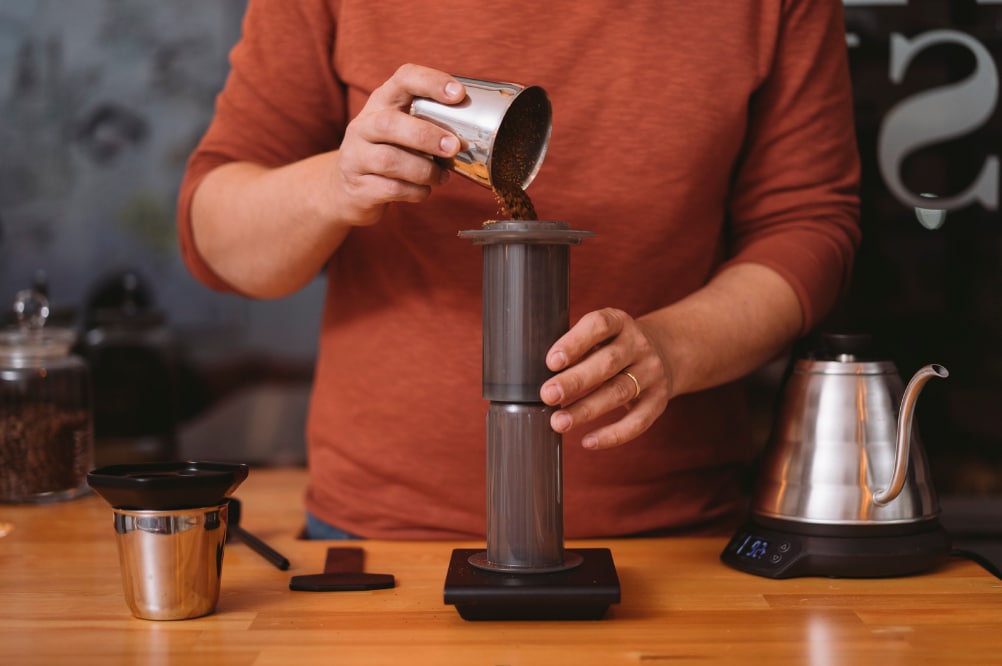
The AeroPress is a compact and lightweight coffee maker that uses air pressure to force hot water through coffee grounds, resulting in a strong and flavorful cup of coffee. It is easy to use, easy to clean, and can produce espresso-like coffee in under a minute. The AeroPress is perfect for campers who want a quick and efficient way to make coffee without compromising on taste.
Moka Pot
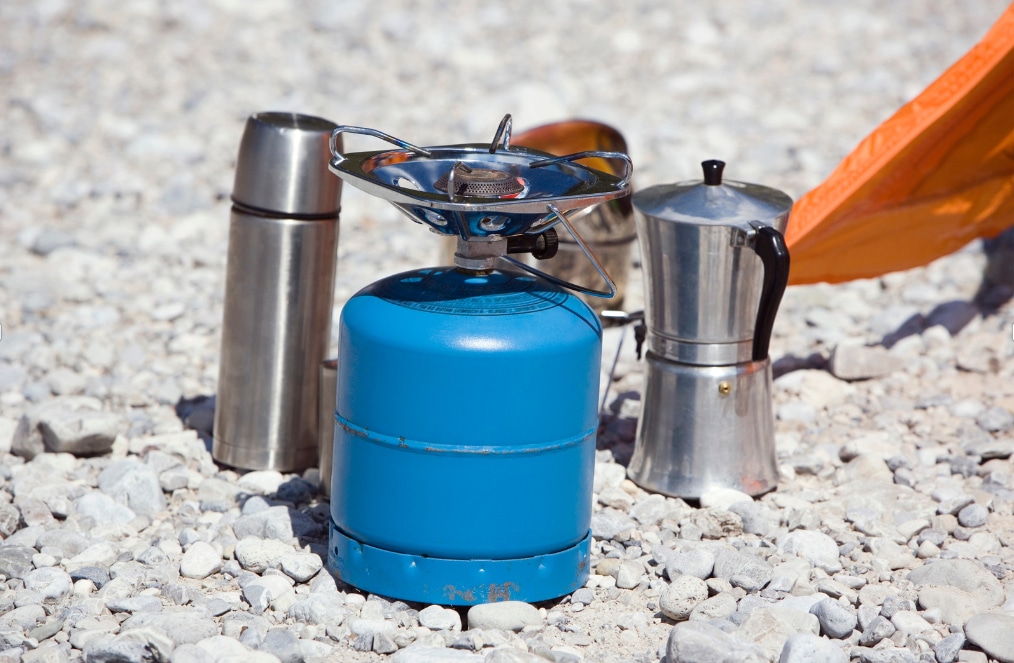
A Moka pot is a stovetop coffee maker that produces coffee by passing boiling water pressurized by steam through coffee grounds. It is a traditional Italian method of making espresso and can produce a strong and bold cup of coffee. Moka pots are available in different sizes and materials, including aluminum and stainless steel.
Percolator
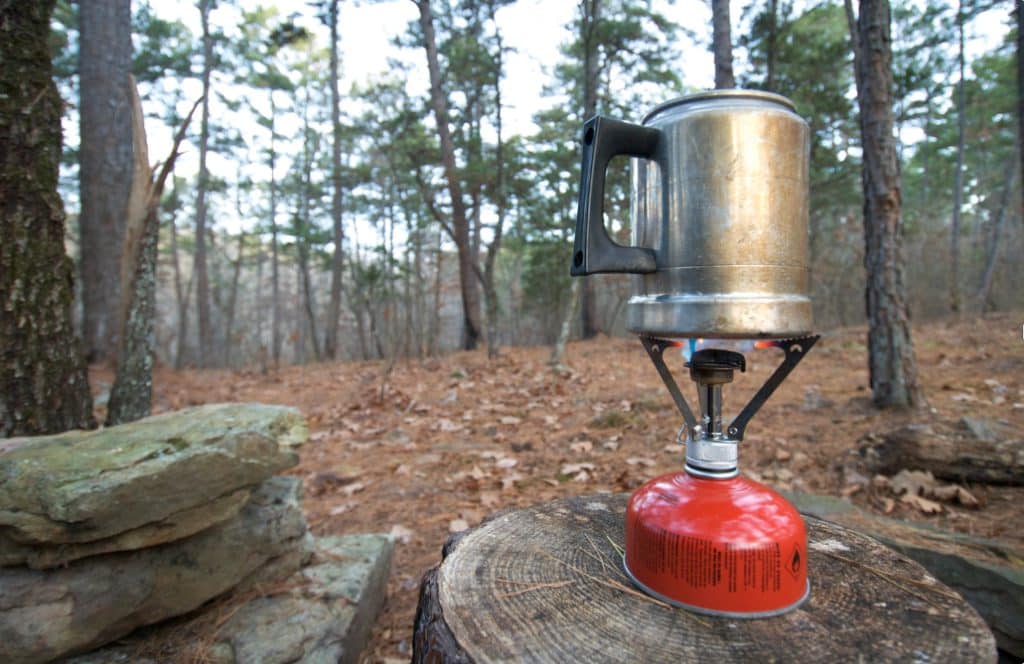
Percolators have been a staple in the camping world for decades. They work by continuously cycling boiling water through coffee grounds using gravity until the desired strength is reached. Percolators are typically made of stainless steel or aluminum and are available in stovetop and electric versions. While they may not produce the best-tasting coffee, their nostalgic charm and large capacity make them popular among campers.
Factors to Consider when Choosing a Camping Coffee Maker
a. Portability and Size
When choosing a camping coffee maker, consider its size and portability. If you are backpacking, opt for a lightweight and compact coffee maker like a pour-over or AeroPress. For car camping, you can afford to bring a larger coffee maker like a French press or percolator.
b. Brewing Time
Consider the brewing time of the coffee maker, especially if you have a tight schedule while camping. AeroPress and Moka pots are faster options, while French presses and pour-overs may take a bit longer.
c. Capacity
Think about how many cups of coffee you need to make at once. If you are camping solo or with a partner, a smaller coffee maker may suffice. For larger groups, consider a percolator or a large French press.
d. Ease of Use and Cleanup
Choose a coffee maker that is easy to use and clean. AeroPresses and pour-overs require minimal cleanup, while French presses and percolators may be more cumbersome to clean.
e. Taste Preferences
Your taste preferences play a significant role in choosing a camping coffee maker. If you prefer a strong and bold cup of coffee, opt for a Moka pot or AeroPress. For a smoother and more balanced cup, consider a French press or pour-over.
Tips for Brewing Great Coffee While Camping
a. Invest in Quality Coffee Beans
The quality of your coffee beans directly impacts the taste of your brew. Choose freshly roasted, high-quality beans to ensure a delicious cup of coffee. If possible, grind your beans just before brewing for optimal freshness.
b. Use the Right Water Temperature
Water temperature plays a crucial role in coffee extraction. Aim for a temperature between 195°F and 205°F (90°C to 96°C) for the best results. You can use a thermometer to measure the temperature or let the water rest for about 30 seconds after boiling before pouring it over your coffee grounds.
c. Use the Correct Coffee-to-Water Ratio
A general guideline for brewing coffee is to use a 1:15 to 1:17 coffee-to-water ratio. This means using one gram of coffee for every 15 to 17 grams of water. Experiment with this ratio to find the perfect strength for your taste preferences.
d. Preheat Your Coffee Maker
Preheating your coffee maker helps maintain a consistent brewing temperature. Simply pour hot water into your coffee maker and let it sit for a minute before brewing your coffee.
e. Practice Proper Cleaning and Maintenance
Keep your coffee maker clean to ensure the best-tasting coffee. Regularly wash your coffee maker and its components with warm, soapy water, and thoroughly rinse them before use.
Additional Accessories for Enhancing Your Camping Coffee Experience
a. Coffee Grinder
A portable coffee grinder allows you to grind fresh coffee beans for optimal flavor. Choose a manual burr grinder for precise and consistent grinding while camping.
b. Kettle
A camping kettle with a gooseneck spout offers greater control when pouring hot water over coffee grounds, especially for pour-over coffee makers.
c. Insulated Travel Mug
An insulated travel mug keeps your coffee hot for hours, allowing you to enjoy a warm cup of coffee throughout your camping trip.
d. Coffee Storage
Airtight coffee storage containers help maintain the freshness of your coffee beans. Look for portable containers with a built-in valve for releasing carbon dioxide, which can negatively impact the flavor of your coffee.
Safe Brewing: Precautions for Making Coffee at the Campsite
- Choose a stable surface: Always set up your coffee maker on a flat, stable surface to prevent spills or accidents. Make sure the surface is away from any flammable materials or objects.
- Use a windscreen: If you’re using a camping stove to heat water, set up a windscreen to protect the flame from wind, ensuring a consistent and safe heat source.
- Keep children and pets away: When making coffee at the campsite, ensure children and pets are at a safe distance to prevent accidents or burns.
- Handle hot items with care: Use oven mitts, a pot holder, or a multi-tool with a heat-resistant grip to handle hot pots, kettles, or coffee makers to avoid burns.
- Properly extinguish the heat source: After you’ve finished making coffee, make sure to properly extinguish the heat source, whether it’s a camp stove or a campfire. This helps prevent accidental burns and potential fire hazards.
- Store fuel safely: If you’re using a camping stove, store fuel containers away from your cooking area and any open flames. Follow the manufacturer’s guidelines for proper fuel storage and usage.
- Be mindful of wildlife: Avoid leaving your coffee grounds or used filters lying around, as they may attract wildlife. Dispose of them responsibly in designated trash containers or pack them out with you when you leave the campsite.
- Use biodegradable soap: If you need to clean your coffee maker while camping, opt for biodegradable soap to minimize environmental impact. Be sure to clean at least 200 feet away from any water sources to avoid contaminating them.
- Stay aware of your surroundings: While making coffee at the campsite, always be aware of your surroundings and any potential hazards, such as uneven terrain, low-hanging branches, or wildlife. Stay alert and focused on the task at hand.
Conclusion
A quality camping coffee maker can greatly enhance your outdoor experience. By understanding the different types of coffee makers, considering essential factors, and following essential brewing tips, you can choose the perfect camping coffee maker and enjoy a delicious cup of coffee during your adventures.
Camping Coffee Maker FAQs
For larger groups, a percolator or a large French press would be ideal as they can brew a larger volume of coffee at once, accommodating multiple people.
Clean your coffee maker with warm water and biodegradable soap if available. Rinse thoroughly to remove any soap residue before using it again.
Use an insulated travel mug to keep your coffee hot for an extended period. Alternatively, you can reheat your coffee using your camping stove or over a campfire.
A portable coffee grinder, camping kettle with a gooseneck spout, insulated travel mug, and airtight coffee storage container are all helpful accessories for enhancing your camping coffee experience.
